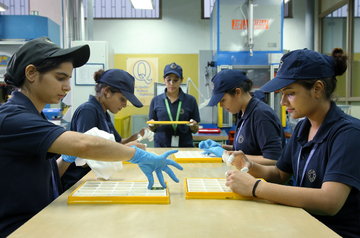Diversity In Manufacturing: Socio-Economic Context
The benefits of diverse workplaces are numerous and well-substantiated in research. Companies gain significantly from the variety of perspectives that people of different backgrounds bring. Gender diversity is of singular importance, since women are a particularly large and underrepresented section of society. From increased productivity to greater resilience, companies and economies at large all stand to benefit from greater and more active participation by women.
While a company may attempt to be a microcosm of gender diversity, inclusion and safety, the prevailing socio-cultural issues women face cannot be denied, and are wont to spill over into workplaces. Research shows that women may be socially conditioned to be reticent, which can prevent them from raising their concerns or tabling their suggestions at the workplace. They may also be less likely than men to be encouraged by their family to seek independence and self-reliance. Some estimates say more than half of India’s women and almost a quarter of India’s men are anaemic and general awareness on nutrition and health is low; a clear barrier of entry to manufacturing jobs where physical health is paramount to high performance.
One company making significant headway on improving gender diversity at the workplace is MMTC-PAMP, India’s largest precious metals processing facility, located in the Mewat region of Haryana. The company has had a number of women working in its Minting division since inception, and has recently hired a cohort of women to the refinery floor. Debasish Bhattacharjee, Head of the Refinery at MMTC-PAMP acknowledges the sobering socio-economic reality.
He speaks candidly about how the organization grapples with it. “Many of the young people we have hired, especially women, are living away from home for the first time. We make sure that we have formal and informal conversations with them about good nutrition and healthy habits through the appropriate channels where they feel most comfortable. This includes occasionally stepping away from formal manager-team conversations and leveraging other more conducive workplace connections, such as mentors and healthcare professionals. We also work with them to improve their command over the English language and inculcate managerial skills rather than just strictly functional competencies. This is because our long-term goal is to have 50% women throughout the organizational hierarchy, and not just at the lower levels. This will cement diversity into our foundations and make it easier for all our employees to realise their fullest potential, regardless of social mores.”
Indian manufacturing remains a bastion of the male-dominated workforce. Manufacturing poses unique challenges to diversity and inclusion: from safety concerns and reservations about the ability of women to do hard physical labour, to worries about the costs of legally required maternity leave and benefit packages, Indian companies are loath to hire women in shop floor positions.
Mr. Bhattacharjee explains why the company chose to bring women onto its shop floor. “Women make for capable, strong and reliable employees. Since we hired women in refinery roles, we have seen a 10%- 15% increase in employee productivity and a markedly more responsible environment on our shop floor. Our culture has been influenced positively and our employees continue to work in harmony with each other. It’s been a resounding success,” asserts Mr. Bhattacharjee.
This was article was originally published here.
















